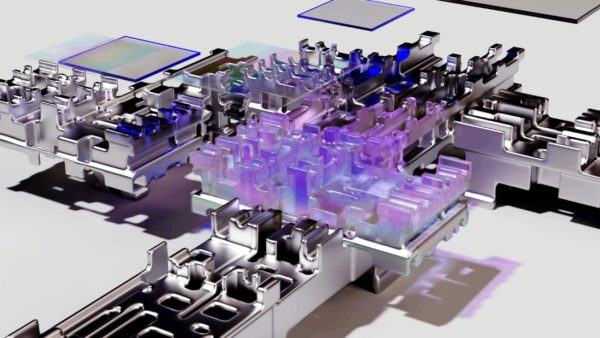There is no question that recent supply chain struggles were expedited by ongoing innovation in the sector. In 2020, the pandemic thrust once reliable supply chains under the microscope. Subject to the most challenging distribution landscape in a generation, our supply chains had to embrace greater agility and transparency. It was a change that was dealt with capably in most cases, however, there is still work to be done.
According to the Logistics Bureau, in 2020, only 22% of companies felt they had a proactive supply chain network. Equally, the number of annual supply chain disruptions continue to rise from 6,192 in 2020, to 11,642 in 2021. How then, do companies drive supply chain transformation and navigate these global challenges to continue to deliver for customers?
Forward-thinking businesses are reimagining a smarter supply chain design with an emphasis on new technology. Real-time supply chain visibility, data analytics and unified communications tools remain crucial to increasing workplace productivity and business profitability. This becomes particularly pertinent in a world where just 3% of organizations escaped supply chain disruption in 2021.
Driving Supply Chain Transformation with Agility and Transparency
It was on this topic that Torsten Pilz – Senior Vice President and Chief Supply Chain Officer for Honeywell – spoke at GDS’ recent NA Supply Chain Summit. As part of his keynote discussion, Torsten contextualized Honeywell’s adaptation strategy and transformation into a smart, customer centric and integrated supply chain.
Before this though, he gave the delegation greater insight into how the role of Chief Supply Chain Officer has shifted considering recent pressures. As Torsten put it, “I think what we all have to accept is that we sometimes will not know what is ahead of us. Our job is to be prepared.” CSCOs cannot predict black swan events like Covid-19 or the obstruction of the Suez Canal and we should not expect them to. Instead, they can only control the organizational response.
Historically, our mistake in this territory is that we have optimized supply chains incorrectly. As Torsten suggested, “supply chains are usually very well built to deal with one thing that’s thrown at us, but now we’ll have 2, 3, 4, 5 issues at the same time.” Given that these disruptions can amount to 11,642 by the end of the year, it is vital we find a solution. To this end, Torsten discussed three solutions that Honeywell has employed to encourage supply chain transformation.
-
Streamlining the Supply Chain
As Torsten put it, “if we want to not only cost-optimize but optimize our service levels too, we have to do things differently.” Streamlining the supply chain is the natural solution here. Helping us to realize greater agility across the board, streamlining systems will help us to fulfill the orders we have, whilst also aligning to the needs of future customers. As Torsten suggested, “you have to be agile and flexible and as such, we really believe in a streamlined, shorter supply chain.”
There are several approaches to take when streamlining the supply chain, including:
- Reviewing and optimizing supply chain processes
- Cleaning up the data associated with orders
- Using legacy systems to inform the digital
For Honeywell, the answer was found in thinking regionally. As Torsten put it, “we really started to think about where we had long, complicated global supply chains and how we could regionalize them. We started to build regional manufacturing hubs to the point that now, more than 80% of what we sell in a region is actually made in that region”.
-
Digitizing the Supply Chain
As suggested above, digital systems will be vital to the continued success of supply chains. It is for this reason that Honeywell has “heavily invested in data, analytics and a digital supply chain in general.” The process of shifting from analog supply chain processes to digital is well known at this stage, but its one that many still struggle with. Connectivity across the network is already essential but it will truly come to differentiate the ineffective supply chains from the effective ones.
As Torsten put it, “at the end of the day, a supply chain is a broker. We broker information from customers and suppliers on one end and then we broker materials on the other side.” So by its very nature, the supply chain is “a system that needs to be connected to all kinds of things in the world. The more you know about things upstream and downstream, the better prepared you can be.”
On innovation, Torsten concluded by stating that, “the true end-to-end and well connected supply chains can become a reality because the technology is there. The beauty of this is that you only have to lay the plumbing once, you do not have to redo this all over again. It may be one huge IT heavy lift but once you are done with it, it is the gift that keeps on giving.”
-
People and the Supply Chain
The final, and most critical piece of the supply chain transformation puzzle is people. As Torsten established, “more than 50% of supply chain transformations fail. They fail because they run out of steam, they fail because management loses interest, etcetera. One thing is true though, if you invest in different skill levels, in a different set up of your people, in different capabilities, the likelihood of success is much higher.”
To realize the kind of success that supply chains are truly capable of, Torsten states, “you have to be agile, flexible and have a team around you that’s able to respond to these things.” For Honeywell, success has been realized by focusing on staff at the forefront of tech. “We primarily hire people who are very technologically driven, because we know that the combination and amalgamation of supply chain and technology, that’s the future.”
When gathering staff for our supply chains, we need to identify the change necessary, understand the specialties required to achieve it, and employ accordingly. Only by doing so can we drive the supply chain transformation we need.
GDS Summits are tailored 3-day virtual event conferences that bring together business leaders and solution providers to accelerate sales cycles, industry conversations and outcomes. Regarding the Supply Chain Insight Summits 82% of Delegates said the overall experience of Digital Summit they attended was either Above Average or Excellent and 75% of Solution Providers said they would be interested in sponsoring future events.
For more, click here to hear from attendees on how GDS has helped them to achieve their business outcomes.
Continue the debate at GDS’ Supply Chain Insight Summits where we bring together senior supply chain executives who are actively seeking to share, learn, engage, and find the best solutions.












